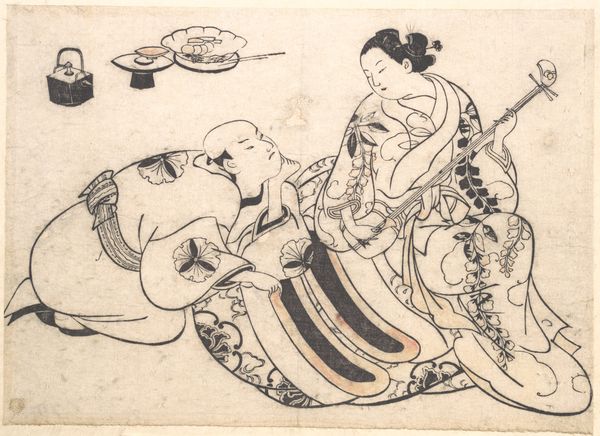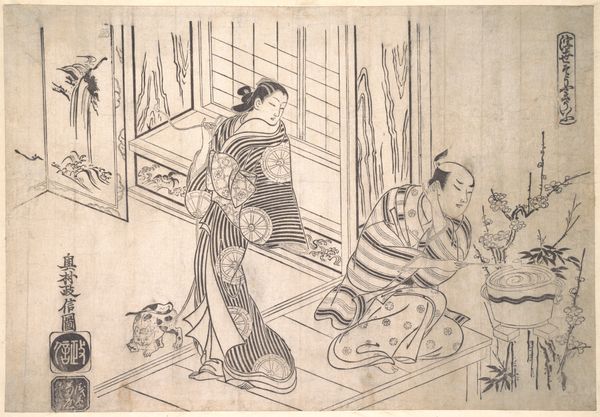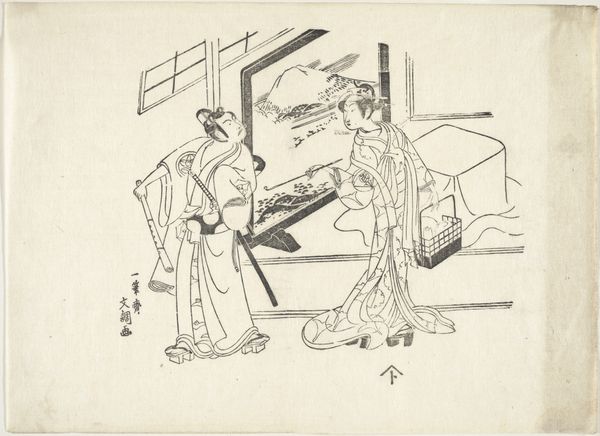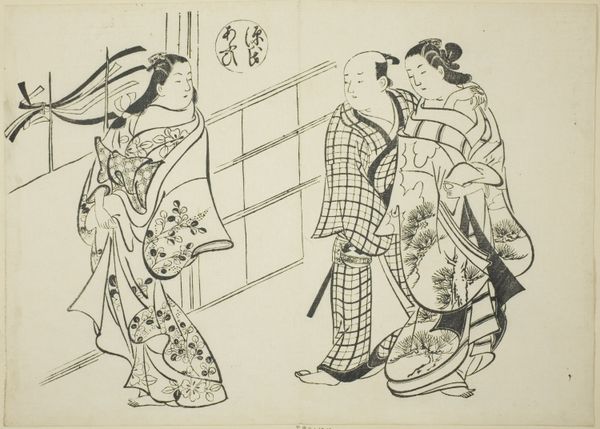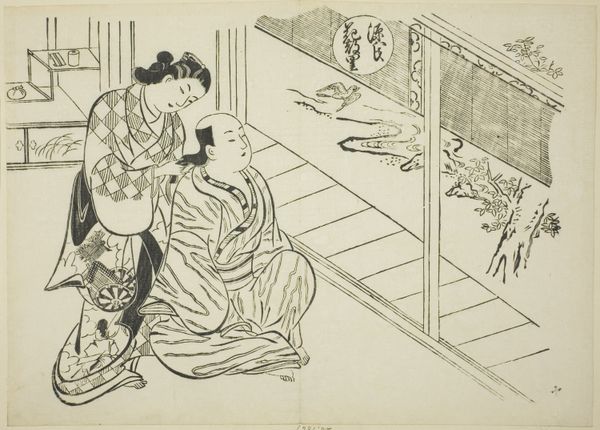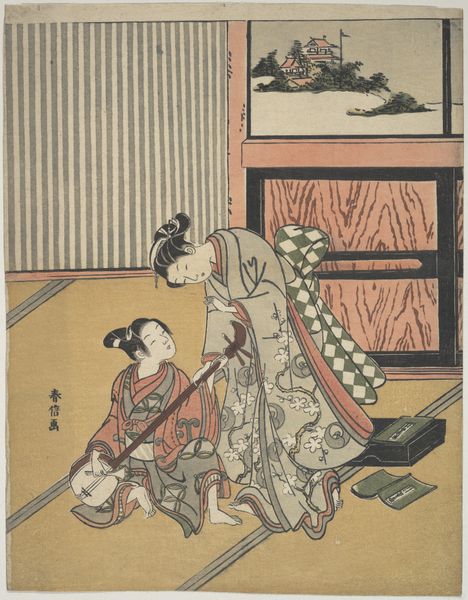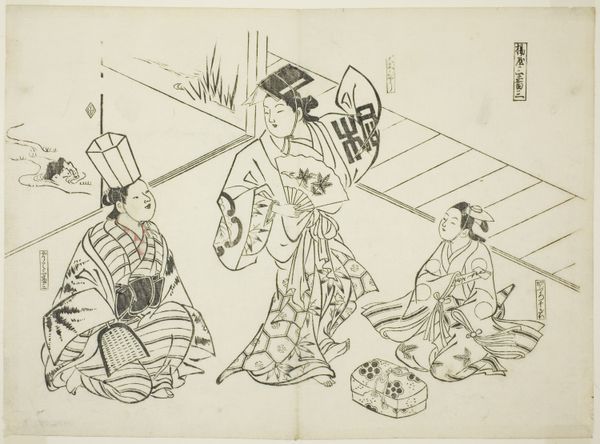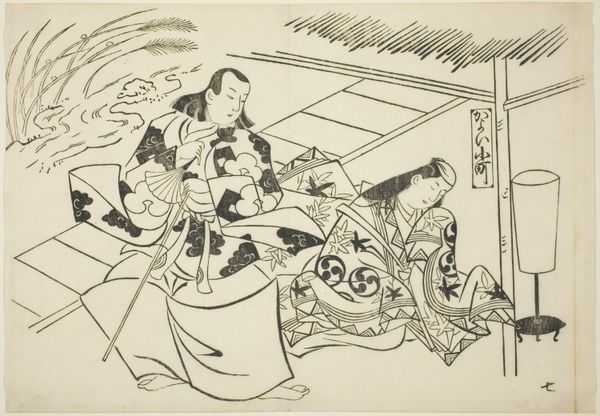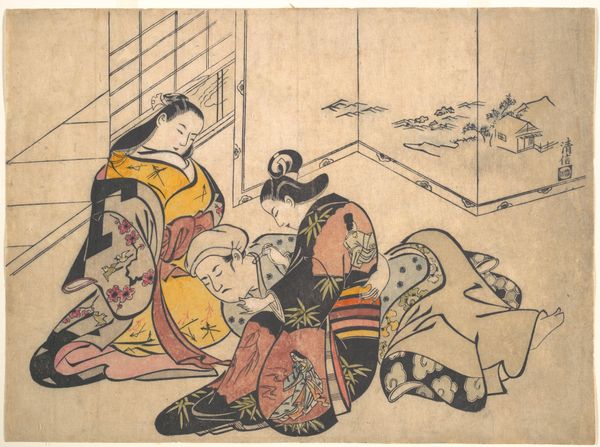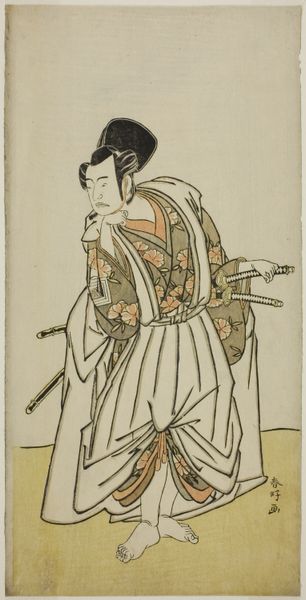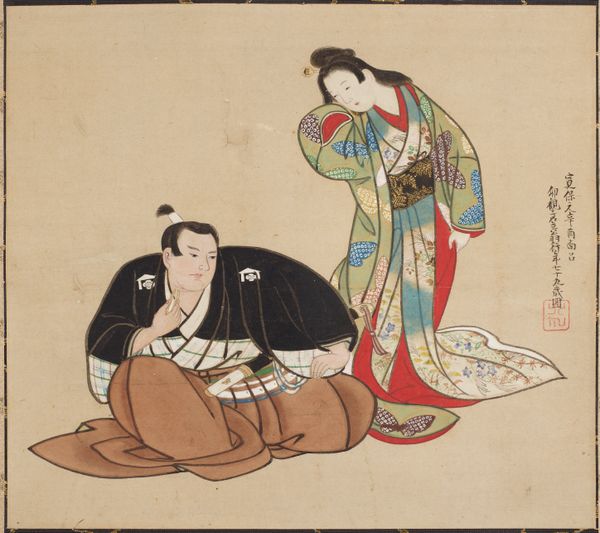
Kotatsu Dojoji, no. 5 from a series of 12 prints depicting parodies of plays c. 1716s - 1726s
0:00
0:00
print, ink, woodblock-print
#
portrait
#
ink drawing
# print
#
asian-art
#
ukiyo-e
#
figuration
#
ink
#
woodblock-print
Dimensions: 27.2 × 38.6 cm
Copyright: Public Domain
Curator: This ukiyo-e woodblock print, "Kotatsu Dojoji, no. 5 from a series of 12 prints depicting parodies of plays," created by Okumura Masanobu sometime between 1716 and 1726, depicts a scene of figures interacting indoors. The piece comes to us from the Art Institute of Chicago. What’s your immediate impression? Editor: Stark. The black ink on the paper is simple yet deliberate, and it really highlights the material qualities of the print itself. There's a textural element achieved through what appears to be deliberate mark-making, particularly noticeable in the clothing of the figures. Curator: Absolutely. The linear quality in the work also adds to the complex narrative here. Consider the context: ukiyo-e prints like these were often produced and consumed by the rising merchant class in Edo-period Japan, reflecting their interests and values, far beyond those permitted within traditional Kabuki plays of the day. In many ways this is an almost radical subversion of artistic material. Editor: How so? The labor of crafting these prints – from the wood carving to the inking process – involved a collaborative workshop model. That communal effort speaks to a broader economic shift towards manufacturing and consumption which democratized traditional, restrictive practices. Curator: Indeed. What's particularly interesting here is that the print is explicitly labeled a “parody”. Kabuki theater often depicted specific gender roles that were rigidly enforced by the shogunate; Masanobu presents gender fluidity that challenges those conventions, especially when the intended audience can also engage and reflect on class politics embedded in the source material. Editor: And the materiality reinforces that disruption! Ukiyo-e prints were comparatively accessible – made from relatively inexpensive materials like wood and paper. Mass production was crucial here. They democratized image-making by creating affordable art for the common person. It makes sense they were subversive on so many other levels. Curator: Precisely! The choices made in the production allowed for greater viewership within a populace starting to engage with emerging social ideals. This, coupled with Masanobu’s composition choices, make this print such a valuable resource for contextualizing not only his own work but Edo period societal practices writ large. Editor: Examining the means of production for art and performance is critical to unlocking the political potential of this work. Masanobu’s technical skills and deliberate choice of cheap materials amplify its messages about class and gender parity! Curator: I completely agree.
Comments
No comments
Be the first to comment and join the conversation on the ultimate creative platform.
